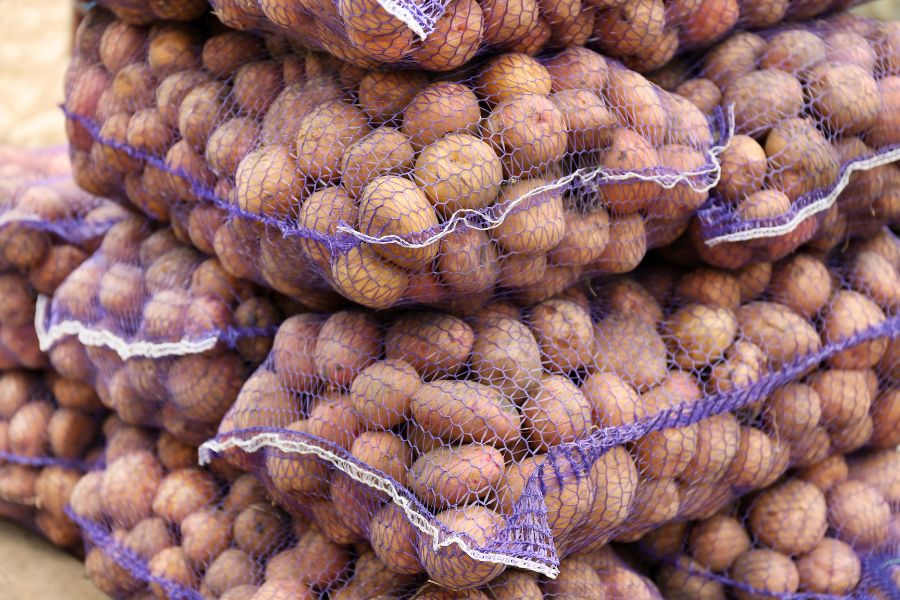Have you ever wanted to preserve potatoes long-term without blanching or canning them? Freeze-drying meals is an easy method to achieve that. It allows you to enjoy your potatoes long after harvest. All you need are potatoes, a freezer, and a food dehydrator. It’s a simple process that lets you savor the flavor of summer’s bounty, even in the dead of winter.
Using this method, you can preserve pounds of potatoes in a space-efficient, lightweight form in just a few easy steps. Freeze drying removes the water from potatoes through sublimation, skipping the liquid state altogether. The result is potatoes that reconstitute perfectly when ready to use them.
Do you want to prep for emergencies? Or would you love to have your favorite comfort food on hand whenever you crave it? Freeze-dried potatoes are a game changer for your pantry. This article will show you just how to freeze dry mashed potatoes.
Before we delve in, have you ever wondered what tips would make shopping more seamless? Or are you wondering if freezers spoil foods? Read these articles for better understanding.
Why Freeze Drying Potatoes Is Beneficial
What are the perks of drying your potatoes? Let’s highlight the most important benefits.
Convenience
Freeze-dried mashed potatoes are lightweight, compact, and easy to reconstitute. All you need is to boil or make baked potatoes or potato salad out of them. Fun fact? It makes for an ideal camping or hiking food. Plus, having emergency food storage is always an added advantage. No fridge is required- just whip up your favorite mashed potato recipe!
Long Shelf Life
Properly freeze-dried and stored in an airtight container, potatoes can last long. Way longer than dehydrated or canned potatoes. Freeze drying removes moisture, preventing spoilage and oxidation and keeping your potatoes safe for decades. So, once you are ready to eat, you’ll rehydrate freeze-dried potatoes and enjoy a healthy meal.
Nutrition
Furthermore, freeze-drying locks in nutrients since vegetables are processed at low temperatures. Studies show dried potatoes have similar nutritional content to fresh potatoes in complex carbohydrates, protein, vitamins, and minerals.
Versatility
The options are endless: freeze-dried potato slices, diced potatoes, mashed potatoes, hash browns. Rehydrate them as needed for your favorite potato recipes. Use them in soups, stews, and casseroles, or eat them alone. The truth is, these potatoes are a great staple to have in your survival pantry.
Cost Effective
Although freeze-dryers are pricey, freeze-drying potatoes yourself is very affordable. And buying pre-made freeze-dried potatoes in bulk saves you money in the long run versus canned or dehydrated potatoes.
Equipment You’ll Need to Freeze-Dry Potatoes
You’ll need a few essential pieces of equipment to freeze-dry your potatoes.
A Food Dehydrator or Freeze-dryer
A food dehydrator with a freeze dryer attachment is ideal, but you can also purchase a standalone home freeze dryer. They range in size and price. So choose one that suits your needs. For small batches of potatoes, a smaller model will work great. For larger harvests, consider a larger unit with more trays.
Trays
Most dehydrators and freeze dryers will come with trays. But you may need to purchase additional ones separately depending on how many potatoes you want to preserve. Stainless steel or plastic trays are good options. However, don’t overload the trays; the potatoes need airflow to freeze dry properly.
Cutting Board and Knife
You’ll need a clean cutting board and a sharp knife to slice your potatoes to an even thickness before loading them onto the trays. Aim for 1/4-inch thick slices for best results.
Storage Containers
Have airtight containers, bags, or jars to store your freeze-dried potatoes. Properly stored, freeze-dried potatoes can last up to 25 years. Label and date your containers so you know how long they will last.
How to Prepare Potatoes for Freeze Drying
To properly prepare your potatoes for freeze-drying, there are a few steps to follow:
Wash and Peel
First, thoroughly wash the potatoes to remove any dirt or debris. Next, peel the potatoes. The peels can become tough when freeze-dried. Peeling them allows the insides to become light and crispy.

Slice Evenly
Slice the potatoes into even pieces so they dry at the same rate. Aim for 1/4-inch thick slices. You can slice them into rounds, sticks, dice, or shreds. Rounds and sticks tend to retain better texture. Shreds and dice can become quite crumbly. For the best results, par-cook the potatoes before slicing by boiling them for 2-3 minutes. Let them cool, then slice. Par-cooking helps the slices retain their shape better during drying.
Blanch (optional)
Blanching the potato slices in boiling water for 1 to 2 minutes is optional but prevents oxidation and preserves color. Plunge the blanched slices in an ice bath to stop the cooking process. Then, drain and pat dry with a towel before arranging on the dehydrator trays.
Arrange in a Single Layer
Arrange the potato slices in a single layer on your freeze-dryer trays, ensuring none overlap. Overlapping slices won’t dry properly. Leave space between slices so air can circulate.
Dehydrate at 125 F
Dehydrate the potato slices at 125 F for 6 to 14 hours until completely dried and crisp, checking on them periodically. Thinner slices will take less time. Properly dried potatoes should be light, crisp, and snap easily.
Condition and Store
Let the dried potatoes cool, then transfer to an airtight container or bag. Condition them for 7 to 10 days before storing them by checking for any daily moisture build-up in the container. If needed, return to the dehydrator for more drying. Properly conditioned and stored, dried potatoes last 6-12 months. Enjoy them as a crunchy snack, or rehydrate them for soups and stews.
Storing Your Freeze-Dried Potatoes for Maximum Freshness
Once your potatoes have been freeze-dried, proper storage is key to maximizing their shelf life and freshness. Please keep these tips in mind:
Use an Airtight Container
The enemy of freeze-dried foods is oxygen, light, and moisture. Store your potatoes in an opaque, airtight container like a jar, bucket, or bag specifically designed for long-term food storage. You can pack it the same way you pack other food you intend to refrigerate. This will keep oxygen out and prevent moisture from seeping in. Avoid plastic bags, as these are not truly airtight and can lead to oxidation.
Keep in a Cool, Dark Place
A pantry, cupboard, or cellar away from direct heat and sunlight is ideal. Temperatures of 60-70°F are best. Higher temperatures will speed up oxidation and compromise freshness.
Use Oxygen Absorbers (optional)
For maximum freshness, add oxygen absorbers to your storage container before sealing. These packets absorb residual oxygen and create an oxygen-free environment. Just make sure to use properly sized absorbers for the container volume.
Best By Date
When properly stored, freeze-dried potatoes can last 10-15 years. For best quality, aim to use them within 7-10 years. Be sure to label and date your storage containers to know when to use up the contents.
Check On your Potatoes Periodically
Every few months, check on your potatoes to ensure there are no signs of spoilage like mold, moisture, or insects. If there are any issues, use the potatoes immediately or discard them. Properly stored freeze-dried potatoes should show no color, texture, or aroma changes when you open the container.
Bottom Line
Generally, freeze-dried food last longer- especially when that food is potato. A supply of homegrown staples like potatoes provides security and sustenance for your family in times of need.
The best part is that dry mashed potatoes may last up to 25 years when stored properly in an airtight container. So you can rest easy knowing you have a shelf-stable source of food to rely on for many years.
Next time you’re harvesting potatoes from your garden or finding a good deal at the farmer’s market, set some aside to preserve using this method.




